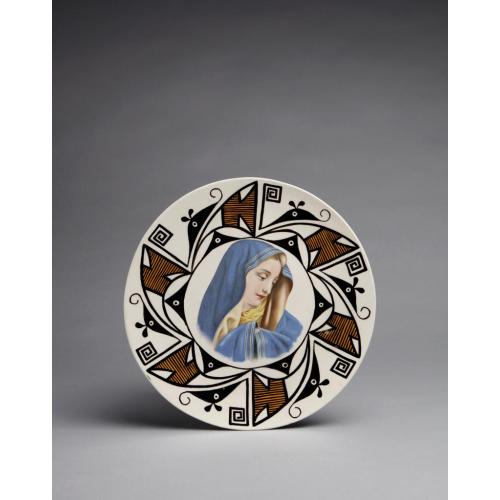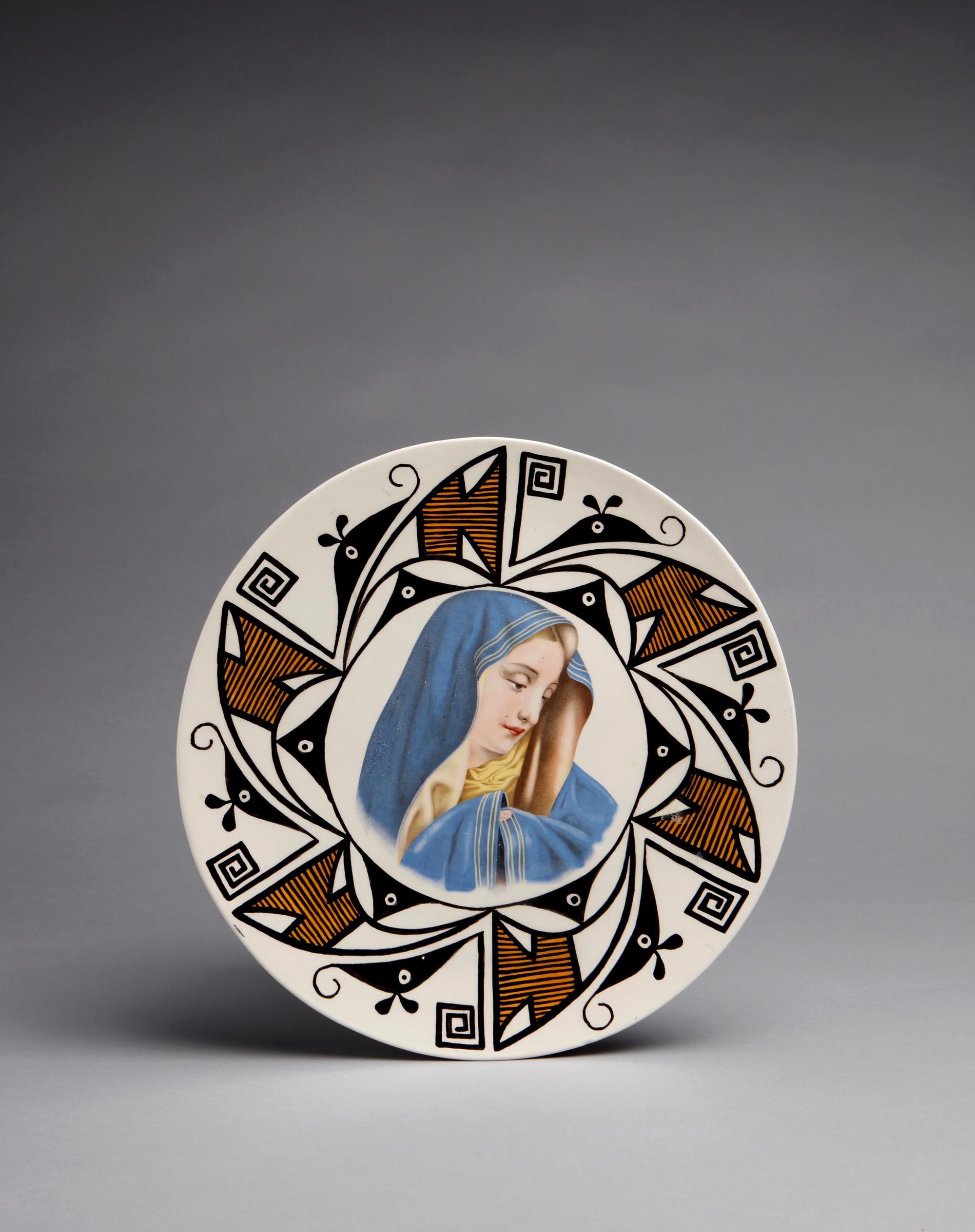
Photograph by Addison Doty. Copyright 2015 School for Advanced Research.
Plate
Date: before 1994
Artist or Maker: Mamie T. Ortiz
Dimensions:
Dimensions: 24.4 × 2.2 cm (9 5/8 × 7/8 in.)
Weight: 1.55 lb. (0.7 kg)
Medium: clay | paints | glaze
Credit Line: Bequest of James Richard (Rick) Dillingham, II; received at IARC in 1994.
Place Made:
Valencia County, New Mexico, Southwest, United States, North America
Object Number: SAR.1994-4-571
Not on view
Tribal Collection Review RemarksAccording to the participants in the Acoma collection review visit May 11-13, 2016 (Events Record “Collection Review: Acoma Pueblo Review 6”): The center image of Mary is a decal transfer. The design is painted to the raw piece first and fired. Decals are then applied post-firing. The entire piece is then glazed to cover the decal transfer and re-fired.
According to the participants in the Acoma collection review visit February 26-27, 2019 (Events Record “Collection Review: Acoma Pueblo Review 12”): Greenware/slip cast pottery are commercially produced and typically painted with commercial slips. Potters at Acoma began purchasing greenware pieces to paint and sell in the 1970s and refer to greenware as “ceramic” which distinguishes it from traditionally made pottery. The process to complete a greenware piece for sale is much simpler than the process of making, painting, and firing a traditionally made pottery. Potters who are no longer able to work with clay to produce traditional pieces because of age or other complications will often turn to painting greenware pieces.
With greenware, there are more options available in shapes/forms as well as slip colors (colors that are not naturally occurring) to decorate with. This has allowed for an evolution in pottery decoration, and we now see decoration in slip colors outside of the traditional, black, browns, reds, oranges, and yellows. We have also seen an increase in non-traditional forms such as figurines, ornaments, household utensils, etc. Glazing greenware to make them waterproof also became popular with pieces, such as cups and bowls that will hold liquids or foods. Glazed pieces are more commonly used now days in place of traditional pieces for serving food.
The ease and availability of greenware has attracted many potters and buyers. Today you will usually find a combination of both traditionally made pottery and greenware pieces being sold at a potters table. Greenware pieces are sold at a lower price than traditionally made pottery. The price of a greenware piece will reflect the size of that piece as well as the difficulty and execution of the design. Traditionally made pottery will be priced higher based on the overall time it takes to complete the process from start to finish which includes; gathering and processing the clay and slips, creating the piece, painting, difficulty and execution of the design, and firing. As a result in pricing difference most tourists will opt for the lower priced greenware pieces because they are more affordable.
In Collection(s)
The Indian Arts Research Center, in collaboration with Native American community scholars, strives to present accurate collections records. Records may be updated as new information becomes available and is reviewed with the Native American community having cultural affinity to particular items. Please write to iarc@sarsf.org if you have questions or concerns related to the documentation.
